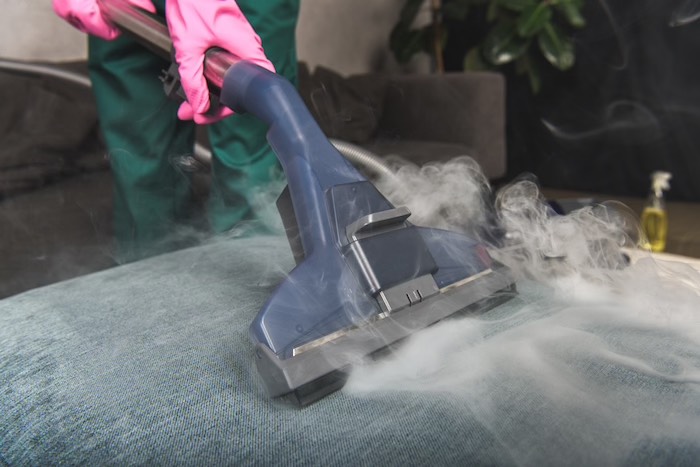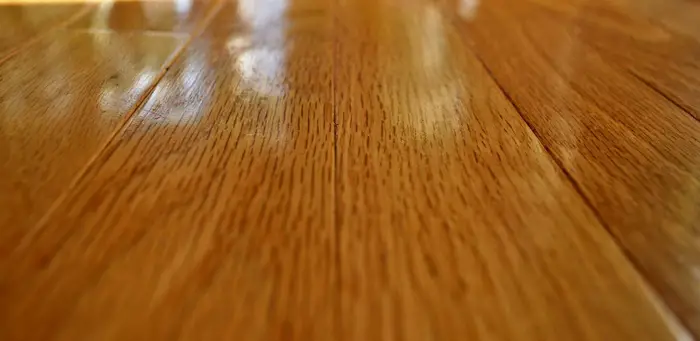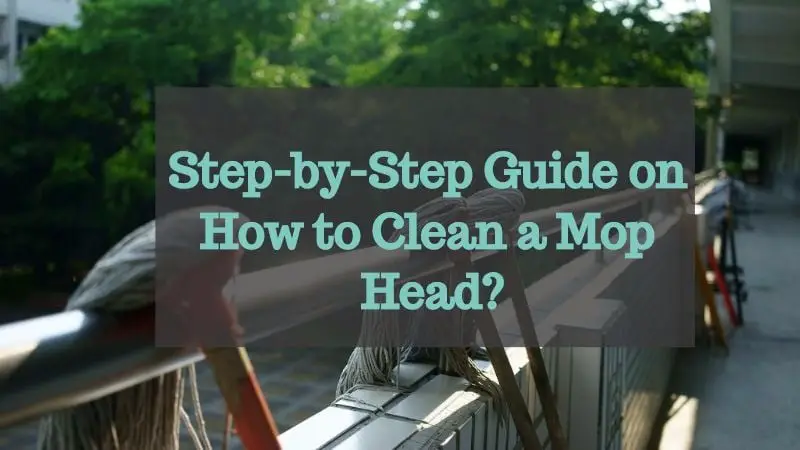Steam cleaners offer a great way to get deep down into carpeting, furniture, flooring and other surfaces to return them looking like new. It’s a chemical-free, non-toxic method that can help kill bacteria, destroy germs and breakdown stuck-on grime.
While it may offer some great benefits, it does beg the question, where does the dirt go when you steam clean? In short, it doesn’t go anywhere. It remains in the same spot after breaking down. This means you should also use a mop, vacuum or wipe it down with a cloth.
It’s important to understand that a steam cleaner’s primary cleaning capacity comes from its heat output. So, while this has tons of advantages, there are some key things of which to take note.
What happens to dirt when you use a steam cleaner?
Some people believe the dirt evaporates upon the moisture drying from the surface while others think it just spreads around and doesn’t do much. Both perspectives are incorrect.
When you use a steam cleaner on an area, it loosens the dirt, grime and other filth adhering to the surface. The actual removal of the dirt requires additional effort. But, the dirt removal with impinges on the kind of steam cleaner you have along with its specific features and attachments.
How do you remove leftover dirt after using a steam cleaner?
The surface you’re cleaning will determine the method you use to remove it. One thing is certain though, you can’t rely on the steam cleaner alone. There are three ways to do this:
- Cloth: You can manually absorb the dirt with a microfiber cloth or lint-free towel. Some steam cleaners have an attachment for this or have a mop head.
- Pad Attachment: Other models of steam cleaners will have a pad-like attachment. You can either use this to apply the steam or to clean off the surface once finished applying heat.
- Vacuum: In many cases, as with furniture or carpeting, you will have to do a good vacuuming over the surface. This will be the best and surest way to remove the leftover, broken up debris. However, some steam cleaners also offer a vacuum feature.
Aren’t all steam cleaners the same?
However, it’s crucial to understand the type of steam cleaner you have. While the suggestions above are for wet ones, there are dry vapor cleaners. This means there may not be a moist mess to clean up.
The low-moisture quality of dry vapor steam cleaners only contains about 5% water. So, it will dry fast and leave next-to-nothing in the way of moisture.
Advice ; Pitfalls
Alternatively, steam cleaners employing heavy moisture will require additional cleanup and drying efforts. This will be particularly true on things like upholstery and carpeting. Moisture that can get trapped in fabric has the potential to create mold and mildew growth. Not only will this damage the carpet, but it can also create a health hazard for people and pets.
Proper Drying
This is why it’s advisable to allow natural air drying for 15 minutes after using either a dry or wet vapor steam cleaner. If the surface is still wet after this time, absorb excess moisture with a clean, lint-free towel and/or keep a fan on nearby.
But, for harder surfaces, like hardwood floors or countertops, using a cloth afterwards will be essential with either style of steam cleaner. However, if you’re cleaning a window, it may also be a good idea to follow up a steam cleaning treatment with a glass cleaner before wiping.
Why doesn’t the steam cleaner collect dirt?
Unless you have a wet vapor steam cleaner with an extractor, there usually will not be a contraption within the appliance to collect the dirt. Professional carpet cleaning companies often have these kinds of steam cleaning machines. They tend to be very expensive and, if you don’t know what you’re doing, can leave a worse mess than it started.
Is it worth it to buy a steam cleaner with an extractor?

However, it may be worth the investment if you have several big dogs or many children that can’t seem to control themselves. You will have to evaluate your situation, how often you intend to use the steam cleaner and if you can afford the extra expense.
Are there any alternatives to buying a steam cleaner that also extracts dirt?
If purchasing a steam cleaner isn’t within your budget, you can rent one for a nominal fee. Grocery stores, cleaning supply shops and home improvement centers will offer a mid-grade steam cleaning extraction machine. These are very easy to use while not spending too much money buying a similar machine.
Will a steam cleaner remove stains and disinfect surfaces?
Steam cleaners are excellent stain removers and they work like a dream to disinfect things like fungus, bacteria and germs. When used correctly, they can get into the depths of the worse stains. The heat and moisture work together to break up and breakdown stains where most other cleaners and efforts fail.
Disinfecting ; Surfaces
If you wish to disinfect a particular area, you have to ensure the steam cleaner can reach a temperature of 212°F. Then, you have to hold it in the spot for 10 minutes in order for it to be effective.
While these benefits are amazing, steam cleaners are not a magical panacea for every surface. They work on many places but it’s not advisable to use them on things that have no tolerance for heat. For instance, avoid using steam cleaners on things like silks, painted walls and thin plastics.
How do you guarantee a professional job with a steam cleaner?
In the event you want a true quality job without the risk of mold developing, it may be better to call a professional. Such could be the case if all you want to clean is carpeting and/or upholstery. But, if you have to do this often, it could get quite pricey.
Are there any tips for DIY steam cleaning jobs?
Doing this yourself does take a bit of time and practice. It’s going to be a matter of knowing your machine and how it works on whatever surface in question. However, keep the following tips in mind when doing a DIY steam cleaning:
- Always absorb excess moisture from fabrics beginning 10 to 15 minutes after application. Wipe off the dirt immediately after steam cleaning things like window, floors and countertops.
- Keep a fan on and ensure a good airflow comes into contact with the surface. This will be particularly poignant for upholstery, carpeting and other fabrics.
- If you use the steam cleaner’s pad for working into the surface to remove dirt, you will should have additional ones on hand so you can replace them as needed.
- For carpeting and other fabrics, check the spot you cleaned to ensure there’s no surface moisture or wetness. Also, pay attention for any funny smells.
- When in doubt, check the underlayment of your carpeting to make sure that this is dry as well. If it holds any moisture, it can create a mold/mildew problem.
Final Thoughts
As you can see, steam cleaners don’t remove the dirt once they handle the stains on any given surface. The dirt and grime are still there. So, there will have to be additional efforts made to ensure all the dirt lifts off the surface for good. This will depend on the surface in question and what kind of steam cleaner you have.
However, there are steam cleaners that come with extractors or vacuum attachments which make cleaning much easier. But, these can be quite expensive. Wet vapor ones leave room for mistakes if you don’t do it right. The potential for mold growth increases greatly if you don’t dry things properly.
See Also:
10 Tips For Mopping The Floor To Make It Clean Enough To Eat On
Can You Use A Steam Mop On Vinyl Floor?
33 Uses For Handheld Steam Cleaner
Can You Steam Clean A Rug On Hardwood Floors?


